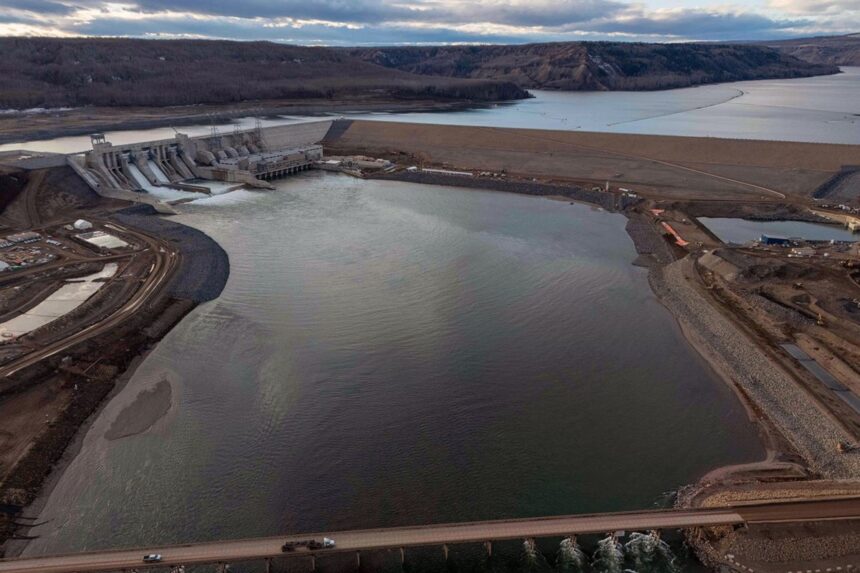In a major milestone for British Columbia’s energy infrastructure, BC Hydro announced Wednesday that the massive Site C hydroelectric dam near Fort St. John has reached full operational capacity, bringing all six generating units online earlier than anticipated. The $16-billion megaproject, which has faced years of controversy and challenges, now stands as a cornerstone of the province’s clean energy strategy.
“This marks a transformative moment for British Columbia’s energy future,” said Chris O’Riley, BC Hydro president and CEO. “Site C will provide reliable, clean electricity for more than a century, powering homes and businesses across the province while supporting our transition away from fossil fuels.”
The 1,100-megawatt dam on the Peace River began producing electricity in December 2022 when the first of its six turbines was commissioned. Since then, BC Hydro has methodically brought each additional unit online, with the sixth and final generator now synchronized to the provincial grid ahead of the original timeline.
According to BC Hydro officials, Site C will generate approximately 5,100 gigawatt hours of electricity annually – enough to power the equivalent of 450,000 homes. The project’s completion comes at a critical juncture as British Columbia faces increasing energy demands from population growth, industrial development, and the accelerating shift toward electrification.
Premier David Eby emphasized the project’s significance during a visit to the dam site last month. “Site C represents a generational investment in clean, renewable energy that will serve British Columbians for decades to come,” he stated. “While the journey to completion has not been without challenges, the dam will play a vital role in our clean energy transition.”
The path to operational status has been arduous. Initially approved in 2014 with a budget of $8.8 billion, the project’s costs nearly doubled amid geotechnical issues, COVID-19 disruptions, and design modifications. Indigenous communities and environmental organizations have long opposed the dam, citing concerns about habitat destruction, treaty rights violations, and the flooding of traditional territories.
Chief Roland Willson of the West Moberly First Nations, who fought the project through legal challenges, remains critical. “This dam has permanently altered lands our people have stewarded for thousands of years,” he said. “The celebration of its completion cannot erase the cultural and environmental damage it has caused.”
Environmental impacts include the flooding of more than 5,500 hectares of land, including prime agricultural areas and wildlife habitat. However, BC Hydro points to the project’s significantly lower carbon footprint compared to fossil fuel alternatives as a crucial benefit in meeting climate objectives.
Energy analysts note that Site C’s completion comes as British Columbia anticipates a 15% increase in electricity demand by 2030, driven largely by industrial growth and electrification efforts. “The timing is fortunate,” explains Dr. Sarah Chen, energy economist at the University of British Columbia. “Without Site C, the province would likely need to import more electricity or delay some decarbonization initiatives.”
The project has been a significant economic driver, employing more than 5,000 workers at peak construction and utilizing services from over 1,400 businesses across the province. Long-term operation will require approximately 200 permanent positions.
As British Columbia navigates the complex challenges of energy transition and climate action, the fundamental question remains: Will the substantial environmental and social costs of megaprojects like Site C ultimately be justified by their contribution to a sustainable energy future?










